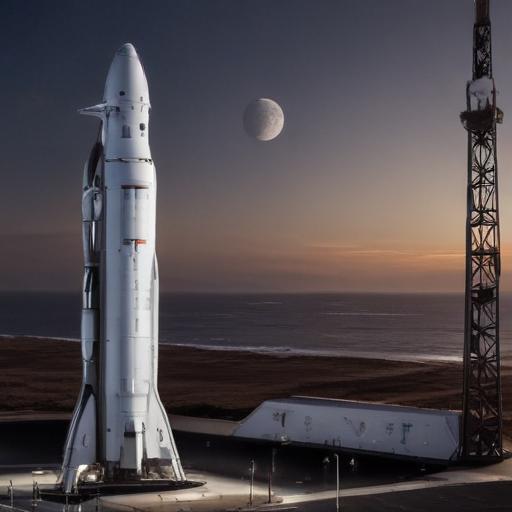SpaceX is preparing for a second attempt to launch Starship’s 10th test flight from SpaceX’s Starbase in southern Texas, aiming for Monday evening as soon as conditions allow, after officials said a fix is still needed for a ground-side liquid oxygen system at the pad.
The opening of the hour-long window is scheduled at 6:59 p.m. CDT (7:59 p.m. EDT / 2359 UTC). Spaceflight Now plans live coverage starting about two hours before liftoff.
The plan follows a late Saturday milestone in which SpaceX completed stacking the more than 400-foot-tall rocket. Less than 20 minutes into fueling the upper stage, Ship 37, the countdown was halted at T-minus 39 minutes and 55 seconds due to an issue, and the Sunday launch attempt was scrubbed to allow time to troubleshoot ground-system problems.
Elon Musk later said the issue was a ground-side liquid oxygen leak. Crews were observed working around the quick-disconnect that feeds both liquid oxygen and liquid methane to the Ship’s propellant tanks. Ahead of the next launch attempt, authorities again cleared the pad and closed the public road near Pad A in the morning, with a similar access plan expected for Monday evening.
Flight 10’s mission profile mirrors Flight 9’s plan: a near-identical objective with a controlled water landing in the Gulf of Mexico rather than attempting a catch of the Super Heavy booster, tail number B16. The landing sequence envisions using two of the three center engines for the landing burn in conjunction with one of the ten middle-ring engines. The goal is to demonstrate that even if a center engine were to fail during landing, the booster could still be recovered safely in an off-nominal scenario.
Ship 37 is targeted for a nominal, suborbital flight that would see the deployment of simulator Starlink satellites, a relight of one Raptor engine, and a controlled splashdown in the Indian Ocean about an hour after liftoff. The Indian Ocean splashdown follows recent test-flight history, including Ship landings in the area during earlier Starship tests.
Past attempts have shown the challenges of Starship’s development. Flight 6 marked the last successful Indian Ocean landing with a Block 1 upper stage, while Flights 7 through 9 experienced issues that prevented full ascent burns, Starlink deployment, or Raptor relight in space. Earlier, a separate incident at SpaceX’s Massey’s test site caused Ship 36 to explode during a six-engine static-fire test, severely damaging infrastructure. Investigations attributed the anomaly to a failure in one of the craft’s composite overwrapped pressure vessels COPVs, with damage that was not detectable by standard screening.
SpaceX’s broader plans for Starship and Super Heavy include potential operations at NASA’s Kennedy Space Center’s Launch Complex 39A. The company has proposed up to 44 Starship launches and 44 Super Heavy landings per year, along with as many as 88 static-fire tests. The FAA is hosting public meetings—four in person and one virtual on Sept. 3—to discuss the environmental impact statement for the Kennedy plan, with public comments open through Sept. 22.
What this means for spaceflight: If Monday’s liftoff progresses, it would mark another step in refining Starship’s heavy-lift system and its return-to-pad procedures, including landing in water as a safe, controlled fallback. With ongoing testing, a growing launch cadence, and the FAA’s environmental review process underway, SpaceX continues to push toward broader operations while emphasizing ground-system reliability and safety.
Summary: SpaceX faces a ground-system issue requiring a fix before a second Starship 10th flight attempt from Starbase, Texas. The plan remains to launch Monday evening within an hour-long window, with Ship 37 attempting a suborbital flight and Starlink-satellite simulations, and a water landing planned for the Super Heavy booster. The FAA’s environmental review process for future launches at Kennedy Space Center is also under way, signaling regulatory oversight as the company expands testing and operations. Positive outlook hinges on resolving the LOX ground-system fault and gathering data from this and previous flights to improve future reliability.
Additional notes for readers: Expect live updates and watching for new countdown milestones, ground-system status, and any changes to the window as teams work to finalize fixes. If successful, this flight would further demonstrate Starship’s potential for reliable, reusable deep-space missions and pave the way for expanded testing and eventual operational use.
